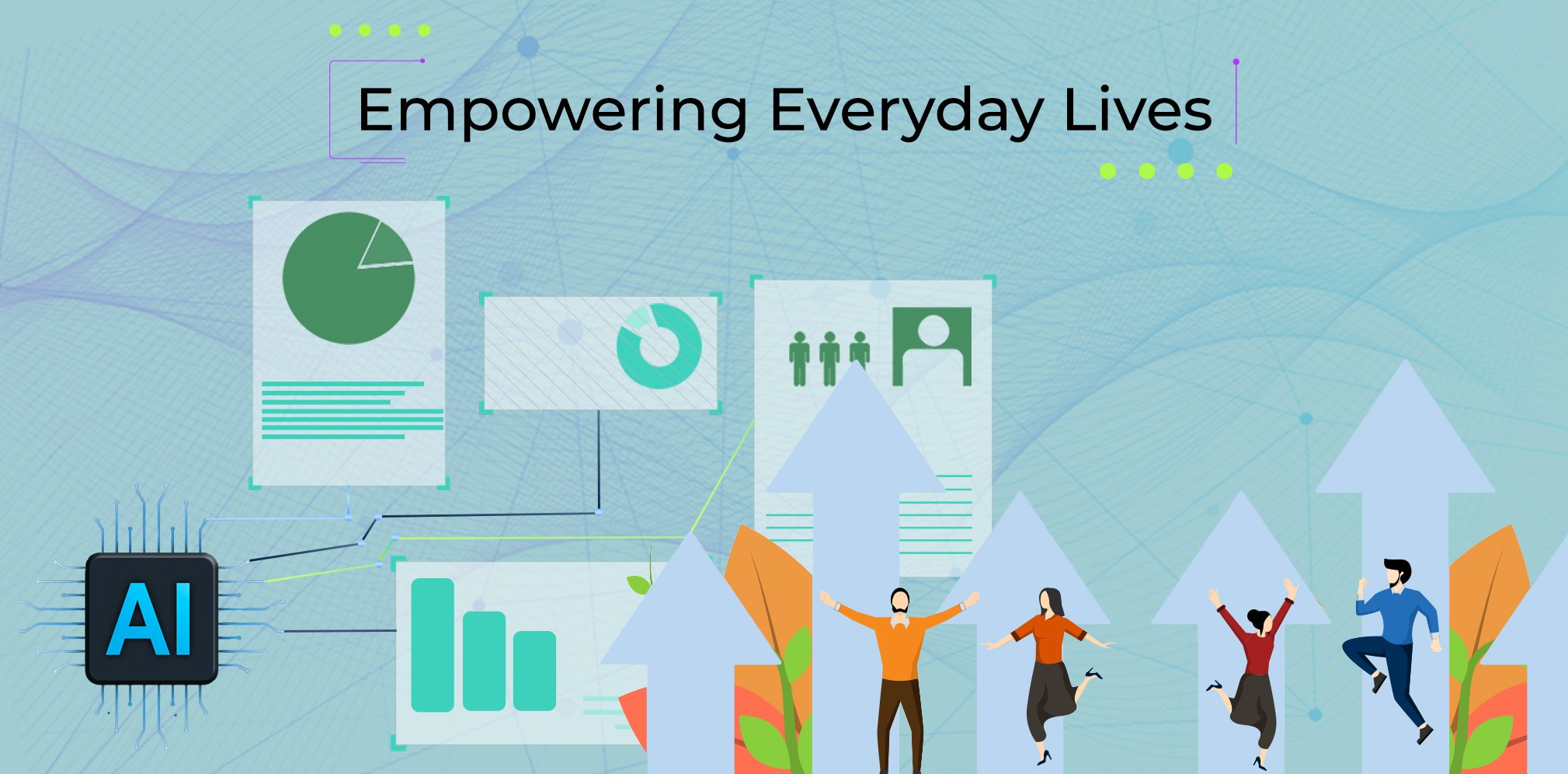Quick Overview
This blog explores how Artificial Intelligence (AI) is bridging the opportunity gap in small towns, creating new job roles, and empowering local talent to compete on a global scale. It highlights how AI is transforming small-town economies by providing access to global markets, creating remote work opportunities, and upskilling youth.
Key points include:
- The role of AI tools in democratizing access to global markets for small businesses.
- How AI-powered remote work and training programs are creating employment opportunities in small towns.
- The impact of AI in reversing migration trends and retaining local talent.
- Real-world examples of AI-driven success in sectors like healthcare, education, and governance.
Introduction:
Artificial Intelligence (AI) is no longer just a buzzword for tech giants in metropolitan hubs. The AI industry is now playing a transformative role in bridging the opportunity gap between urban and small towns, bringing high-skill employment to small towns and helping mitigate migration challenges in countries like India. By generating new types of jobs, upskilling local youth, and enabling remote work, AI is empowering small-town talent to compete on a global scale.
AI Tools: Democratizing Access to Global Markets
The democratization of AI, from no-code machine learning platforms to readily available APIs, is empowering individuals in small towns to participate in the global economy. Consider the rise of:
- E-commerce and Digital Marketing: AI-powered platforms are enabling small businesses in remote areas to reach customers worldwide. AI-driven analytics tools help them understand market trends and optimize their online presence, levelling the playing field with larger urban competitors.1
- Remote Development and Data Annotation: AI-driven project management and communication tools facilitate remote collaboration, allowing skilled individuals in small towns to contribute to global projects. Data annotation, a crucial component of AI development, can be performed remotely, creating employment opportunities for those with basic computer skills.2
- AI-Powered Education and Training: High-quality data annotation and labeling require a combination of technical skills, domain expertise, and soft skills to ensure accuracy, consistency, and usability for AI/ML models. Online learning platforms powered by AI are providing access to high-quality education and training in fields like data science, machine learning, and software development, bridging the skills gap and empowering youth in small towns.3
Employment Opportunities in Small Towns
AI is enabling small towns to participate in the global economy by creating remote work opportunities and automating repetitive tasks. For instance, companies like Amazon and Microsoft have invested heavily in AI-related technologies, with Amazon alone committing $100 billion in 2025. These investments are expected to create jobs in data labeling and annotation, AI model training, and remote customer support, roles that can be performed from anywhere with a stable internet connection.4
In India, the rise of AI-driven startups in small towns has been significant. For example, Jaipur-based Staqu Technologies uses AI for crime analytics, creating jobs for local tech talent. Similarly, AI-powered platforms like WorkIndia are connecting small-town job seekers with employers, bridging the employment gap.
Upskilling Youth in Small Towns
AI is also addressing the skill gap by offering targeted training programs. The International Telecommunication Union (ITU) launched an AI Skills Hub in 2025, aiming to train 10,000 individuals globally by the end of the year.5 In the UAE, the National Program for Artificial Intelligence collaborates with universities to provide specialized AI training, equipping youth with skills to thrive in a tech-driven world.6
Similarly in India, NASSCOM’s FutureSkills Prime has upskilled over 500,000 Indian learners (many from small towns) in AI/ML, data science, and automation in the last two years. In the U.S., the Brookings Institution highlights that generative AI could boost annual labor productivity growth by 0.4–0.9 percentage points.7 This productivity surge is particularly impactful in small towns, where AI tools are helping local businesses optimize operations and compete on a larger scale.
Addressing the Migration Challenge
One of the most pressing issues for small towns is the migration of skilled youth to urban areas. AI is reversing this trend by creating local opportunities. Remote work enabled by AI tools allows professionals to stay in their hometowns while working for global companies. For example, the expansion of the BPO/ITeS sector into India’s smaller towns is a prime example of how urban opportunities are decentralizing, empowering local talent, and bridging the education-work gap.
Global outsourcing of AI training data has further amplified the role of small-town workers. A 2024 McKinsey study highlights that 30% of AI training data-related tasks are performed by workers in small towns across India, the Philippines, and Africa.
This shift underscores how AI-driven industries are bridging economic gaps and distributing job opportunities worldwide, fostering inclusion in regions previously overlooked in tech advancements. These developments paint a promising picture of AI’s transformative impact on global employment and skill-building in underserved areas.
Real-World Impact
The impact of AI on small towns is already evident. According to a 2023 OECD report, 21% small town workers are in jobs affected by generative AI, compared to 32% in urban areas. This indicates that small towns are beginning to benefit from AI-driven job evolution rather than displacement.9
In the healthcare sector, AI tools are enabling small-town clinics to offer advanced diagnostic services, reducing the need for patients to travel to urban centers. For example, AI-powered diagnostic tools like Qure.ai are being deployed in small towns in India to improve healthcare accessibility.
A Microsoft-backed startup, Karya provides AI data annotation and labeling jobs to small town Indians, paying above minimum wage. Workers in villages now earn ₹250–500 per hour ($3–6) for tasks like speech data collection and image tagging, which train AI models. Samagra, a governance-focused AI initiative trains small town graduates to work on AI-driven public policy projects, creating jobs in states like Haryana and Himachal Pradesh.
Similarly, NextWealth has set up delivery centers in small towns, where there’s a large pool of untapped talent, particularly among first-generation graduates. This brings employment opportunities directly to these communities, preventing the “brain drain” that often occurs when young people move to cities for work.10
The Road Ahead
AI has the potential to transform small towns into dynamic centers of innovation, creating new employment opportunities, upskilling youth, and addressing the migration challenge. By embracing this technology and investing in the necessary infrastructure and skills development, we can create a more inclusive and equitable future for all. To fully realize the potential of AI in bridging the opportunity gap, we need to:
- Invest in digital infrastructure: Reliable internet access and affordable devices are essential for enabling participation in the digital economy.
- Promote digital literacy: Education and training programs are needed to equip individuals in small towns with the skills necessary to use AI tools and thrive in the digital age.
- Foster collaboration: Partnerships between governments, businesses, and educational institutions are crucial for creating a supportive ecosystem for AI-driven development in small towns.11
Conclusion
AI is more than a technological revolution; it is a socio-economic equalizer. By creating jobs, upskilling youth, and addressing migration challenges, AI is transforming small towns into hubs of innovation and opportunity. As investments in AI continue to grow, the potential for small towns to thrive on the global stage becomes increasingly tangible. The future is not just urban; it is inclusive, and AI is leading the way.
1 – https://litslink.com/blog/ai-for-small-business-how-artificial-intelligence-can-help-small-firms
2 – https://klaxoon.com/insight/6-ways-to-use-ai-in-collaborative-tools-for-smarter-project-management
3 – https://www.sandtech.com/insight/ai-closes-the-digital-divide-in-connectivity-education-healthcare/
5 – https://www.itu.int/hub/2025/03/ai-skills-for-the-future-a-new-un-training-platform/
6 – https://ai.gov.ae/ai-program/
9 – https://www.businessnews.ie/upskilling-the-worforce/adapting-to-new-generative-ai-job-trends-and-opportunities-locally/
10 – https://www.nextwealth.com/about-us/
Callouts
Economic Impact: A 2024 McKinsey study reveals that 30% of AI training data-related tasks are outsourced to workers in small towns across India, the Philippines, and Africa.
Upskilling Progress: NASSCOM’s FutureSkills Prime has trained over 500,000 learners in small towns, advancing skills in AI, data science, and automation.
Real-World Applications: Tools like Qure.ai provide advanced diagnostics to small town clinics, reducing the need for patients to travel to urban centers for healthcare.
Migration Challenge: AI-driven remote work opportunities on platforms like Upwork and Fiverr are helping professionals stay in their hometowns while working for global companies.
Global Connectivity: AI democratizes access to international markets with technologies like no-code platforms and APIs, enabling small-town businesses to thrive online.
Employment Growth: India’s AI market is projected to reach $17 billion by 2027, growing at a 25–35% CAGR and creating significant job opportunities in small towns.
Inclusivity: NextWealth’s delivery centers in small towns help tap into untapped talent, providing jobs to first-generation graduates.
AI for Education: ITU’s AI Skills Hub aims to train 10,000 individuals globally, targeting underserved communities for specialized AI learning.

